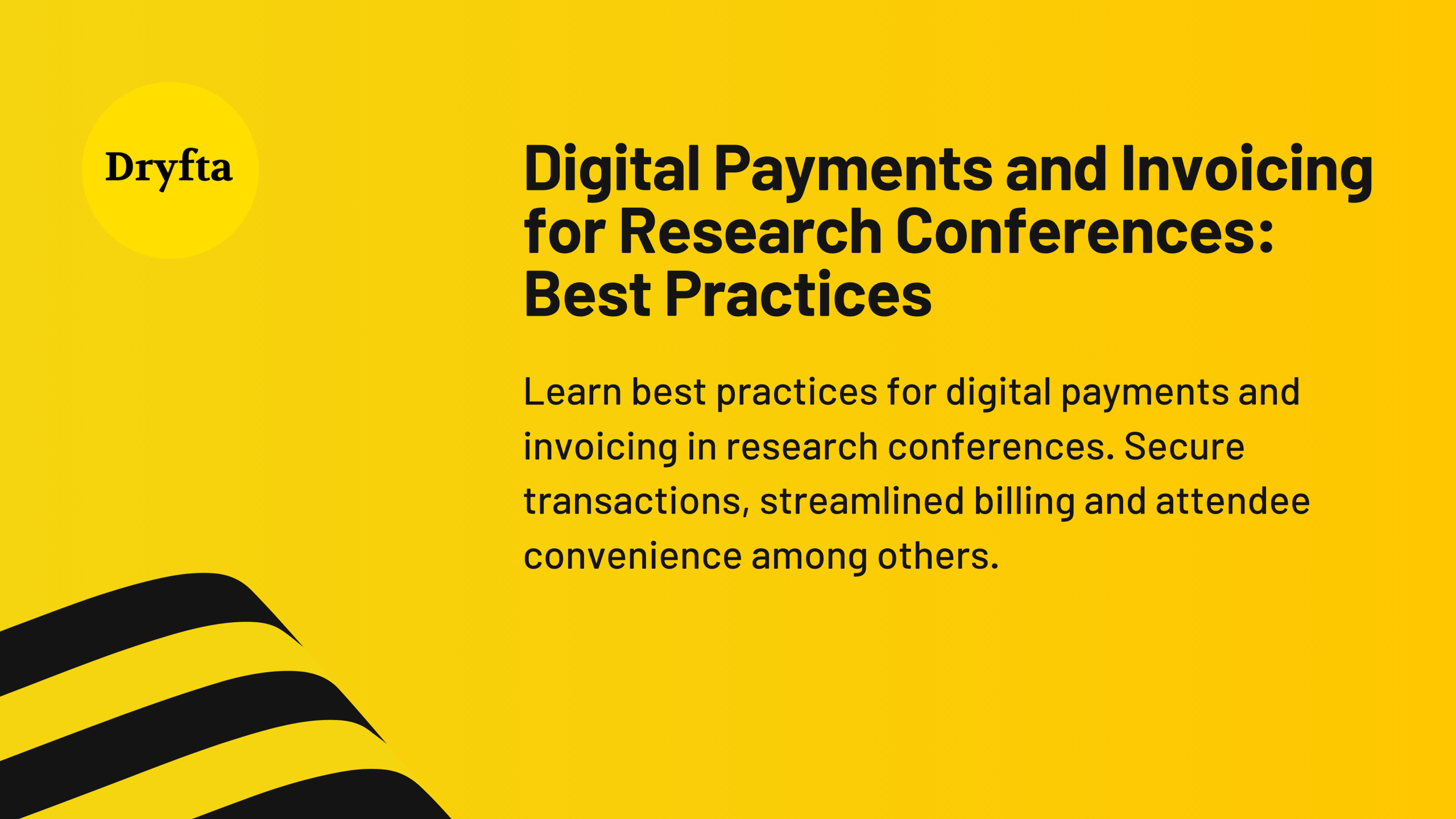
The advent of digital payment systems has brought with it some remarkable possibilities for conference organizers. This is especially true for managers of research conferences who previously drowned in a sea of payment reconciliation spreadsheets and manual invoice generation. Some payments arrive as wire transfers, while others come through credit cards; most are processed correctly, but some mysteriously vanish into banking limbo.
The choice of payment methods that international attendees prefer also warrants mild interest. Some others pay twice, just to be sure their registration went through.
As surprising as it may seem, it is not uncommon for such payment confusion to plague even the most organized conferences and professional events. At the receiving end of it is an accountant who manually matches hundreds of transactions by remaining faithful to a spreadsheet that crashes periodically and only adds to the event’s organizational woes.
The future for conference payment management is digital, and it is here.
What Do Conference Organizers Need to Ask Themselves?
The million-dollar question for organizers of research conferences today is not what you’d expect to hear. To persuade event managers to adopt digital payment systems is far beyond the modern picture. Digitizing financial operations has become important because academic conferences today are large and often involve international participants. We have more attendees than ever, plenty of payment methods to accommodate and therefore, expansive financial tracking requirements to meet.
The question is not whether event managers are prepared to digitize their payment processes. Rather, it is how quickly they can accommodate a switch from outdated manual methods to modern integrated payment and invoicing platforms.
How Conference Payments Used to Work
Not too long ago, conference organizers relied entirely on manual processes to manage conference payments and invoicing. Finance managers would receive payment notifications via email, manually update registration spreadsheets, generate invoices one at a time using word processors and track outstanding payments using color-coded cells. However, with growing attendance figures and international participation, the math turned impractical and increasingly unwieldy. Manual tracking worked as faithfully as possible for finance teams until it couldn’t.
These systems functioned adequately when conferences served primarily local attendees paying through similar methods. However, as research conferences expanded globally and payment complexity intensified, the cracks in these systems became almost impossible to ignore.
Digital Payment Integration Changes Everything
Integrated payment and invoicing platforms came just in time to alleviate conference organizers’ growing financial management pains. These were striking digital solutions that took center stage in conference technology. These systems promised comprehensive solutions to the financial nightmares that organizations are frequently plagued with.
An integrated payment system, simply put, is specialized software capable of receiving, processing and recording transactions from multiple payment methods. The system then generates invoices automatically, tracks payment status and provides financial reporting without manual intervention. With time, these platforms also adapted to include automated reminders for unpaid registrations, refund processing capabilities and multi-currency support that facilitated international conference management.
Comparing Manual and Automated Payment Processing
Implementation Strategies That Actually Work
A well-planned digital payment and invoicing setup can save organizers hours of manual work and reduce the chance of errors. The strategies delineated below show you what digital payment integration can do for your conference transactions.
Choose Payment Methods Your Attendees Actually Use
Research your attendee demographics before deciding which payment methods to support. European attendees might prefer Single Euro Payments Area (SEPA) transfers, while Asian participants often use regional payment systems. North American attendees typically expect credit card options. Supporting the right mix of payment methods reduces registration abandonment and speeds payment collection.
Make Payment Terms Crystal Clear
During registration, display payment deadlines, accepted methods, any processing fees and refund policies prominently. Unclear payment terms cause confusion that generates support requests and payment delays. Transparency about costs and timelines sets appropriate expectations from the first interaction.
Let Technology Generate Every Invoice
Every registration should trigger automatic invoice generation that includes all required information for institutional reimbursement and tax purposes. Invoices should be available for download immediately after payment and sent via email automatically. Manual invoice creation for even a small percentage of registrations creates unnecessary work.
Account for Differences in International Currency
If your conference attracts international attendees, display prices in multiple currencies but process payments in your institution’s preferred currency. Be transparent about conversion rates and who bears currency conversion fees. Attendees appreciate knowing exactly what they’ll pay in their local currency even if the actual charge appears in a different currency.
Prepare for Cancellations and Refunds
Establish clear refund policies before registration opens and configure your payment system to handle refunds efficiently. Whether you offer full refunds before certain deadlines or charge administrative fees, the process should be straightforward for both attendees requesting refunds and staff processing them.
Make the Switch to Professional Payment Management
If you are a conference organizer still held back by manual payment tracking that takes you down a path to financial reconciliation nightmares with every new registration, it’s time to switch today. Manual approaches to handling conference payments are medieval in comparison to the endless, sophisticated features offered by integrated platforms today. The future of research conference financial management is here and it is automated, secure and professional.
At Dryfta, we are committed to helping conference organizers, research institutions and academic societies tap into the best of payment technology to help focus human energy where it matters most: in hosting scientific discussions that advance knowledge rather than in matching bank transfers to spreadsheet rows.
Dealing with financial administrative overhead is a challenge; our integrated payment and invoicing system is prepared and primed to handle for you. Our platform connects registration, payment processing, invoice generation and financial reporting in one unified system designed specifically for research conferences. Here’s to faster, simpler and more reliable transactions!




